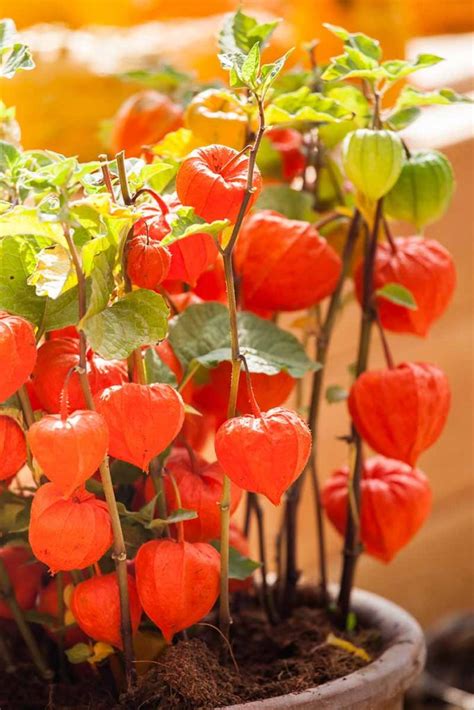Chinese Lantern Growing: A Comprehensive Troubleshooting Guide
Chinese lanterns ( Physalis alkekengi), with their charming papery husks surrounding bright orange berries, add a unique touch to any garden. However, growing these beautiful plants can sometimes present challenges. This comprehensive guide addresses common problems and offers solutions to help you cultivate healthy, vibrant Chinese lantern plants.
Why Aren't My Chinese Lanterns Producing Fruit?
This is a common frustration for many gardeners. Several factors can contribute to a lack of fruit production:
-
Insufficient Pollination: Chinese lanterns are self-pollinating, but for optimal fruit set, encourage pollination by gently shaking the plants or planting multiple plants close together to facilitate cross-pollination by wind and insects. Lack of pollinators, especially in early spring, can be a factor.
-
Poor Soil Conditions: These plants prefer well-drained soil rich in organic matter. Poor drainage can lead to root rot, hindering fruit development. Amend heavy clay soils with compost or other organic materials to improve drainage and fertility.
-
Nutrient Deficiencies: A lack of essential nutrients, especially phosphorus and potassium, can affect flowering and fruiting. Regular fertilizing with a balanced, slow-release fertilizer can help. Avoid excessive nitrogen, which promotes leaf growth at the expense of fruit production.
-
Incorrect Watering: Both underwatering and overwatering can stress the plant and prevent fruiting. Aim for consistently moist but not soggy soil. Water deeply and less frequently, allowing the soil to dry slightly between waterings.
My Chinese Lantern Leaves Are Yellowing – What's Wrong?
Yellowing leaves can indicate several problems:
-
Nutrient Deficiencies (Chlorosis): Yellowing leaves can be a sign of iron, magnesium, or nitrogen deficiency. A soil test can help identify the specific nutrient lacking. Amend the soil with the appropriate fertilizer or soil amendment.
-
Overwatering: Soggy soil leads to root rot, which prevents the plant from absorbing nutrients, resulting in yellowing leaves. Improve drainage and reduce watering frequency.
-
Pests and Diseases: Certain pests and diseases can cause leaf yellowing. Inspect your plants carefully for signs of pests like aphids or spider mites. Treat infestations promptly with appropriate insecticides or miticides. Fungal diseases can also cause yellowing; improve air circulation to reduce humidity.
-
Water Stress: Both underwatering and overwatering can stress the plant, leading to yellowing leaves. Aim for consistent moisture.
How Can I Prevent Diseases in My Chinese Lanterns?
Chinese lanterns are relatively disease-resistant, but proper cultural practices can minimize disease risks:
-
Proper Spacing: Good air circulation helps prevent fungal diseases. Space plants adequately to allow for airflow.
-
Sanitation: Remove and dispose of any diseased or dead plant material promptly to prevent the spread of diseases.
-
Avoid Overhead Watering: Overhead watering can promote fungal diseases. Water at the base of the plant to keep foliage dry.
What Pests Commonly Affect Chinese Lanterns?
While relatively pest-resistant, Chinese lanterns can be susceptible to:
-
Aphids: These small insects suck sap from the plant, causing stunted growth and leaf curling. Control them with insecticidal soap or neem oil.
-
Spider Mites: These tiny mites also feed on plant sap, creating stippling and webbing on leaves. Regularly inspect plants and use miticide if necessary.
-
Slugs and Snails: These can damage leaves and stems. Control them with slug bait or by hand-picking.
Are Chinese Lanterns Invasive?
Yes, in some regions, Physalis alkekengi is considered invasive. It readily self-seeds, spreading aggressively and potentially outcompeting native plants. Regularly deadhead spent flowers to prevent unwanted self-seeding and manage their spread. Consider growing them in containers to further limit their spread.
By understanding and addressing these common challenges, you can successfully cultivate beautiful and bountiful Chinese lantern plants in your garden. Remember, consistent observation and proactive care are key to preventing and solving problems effectively.

